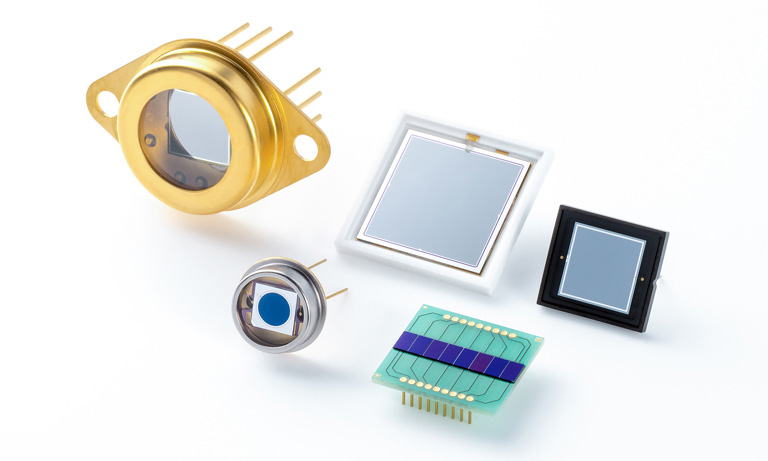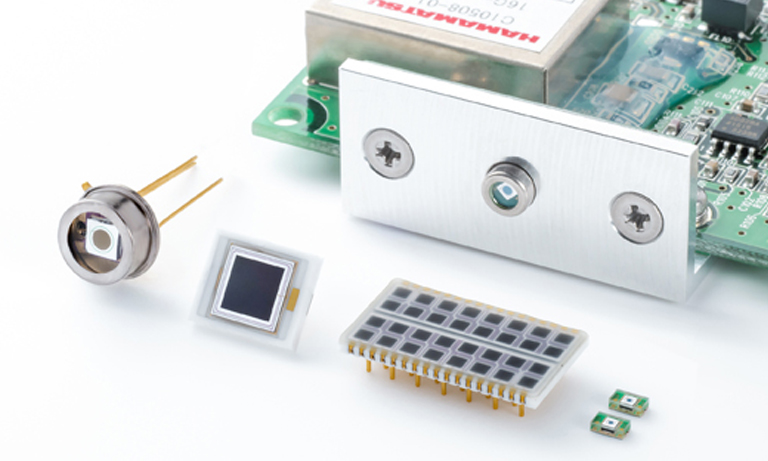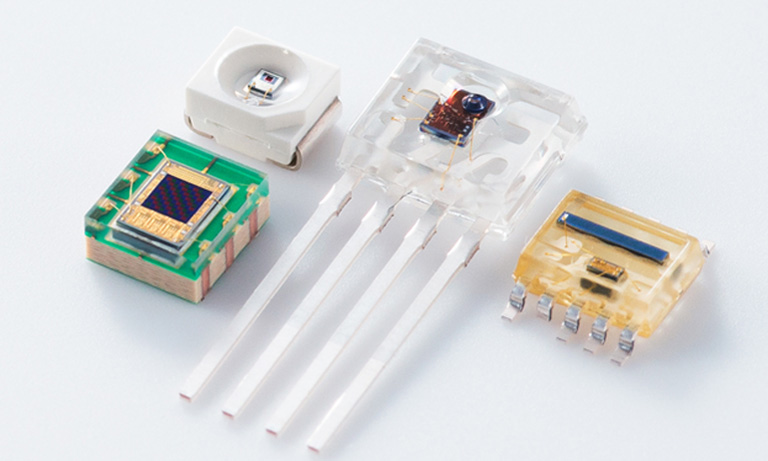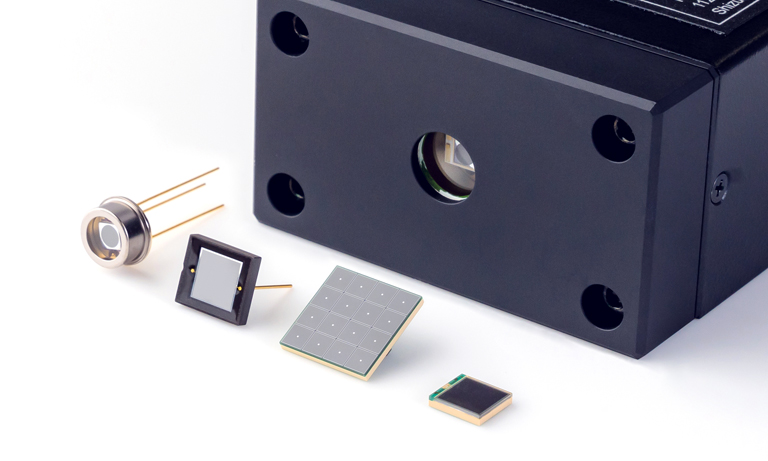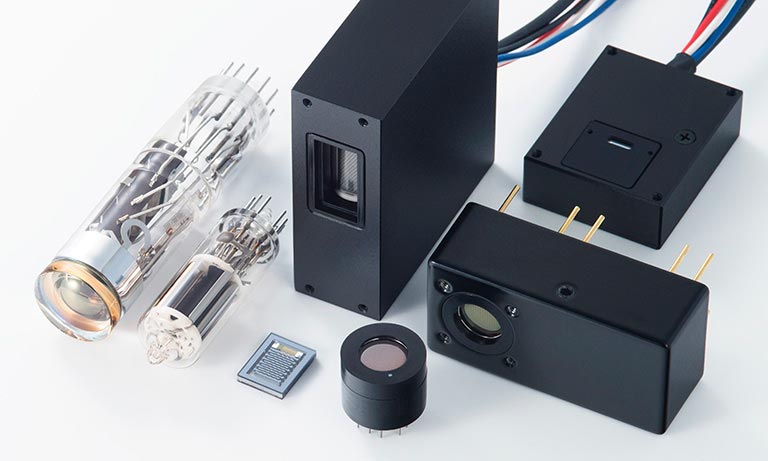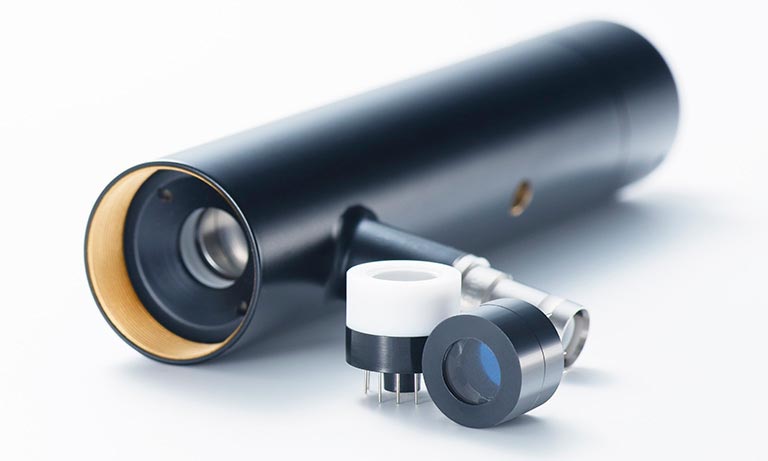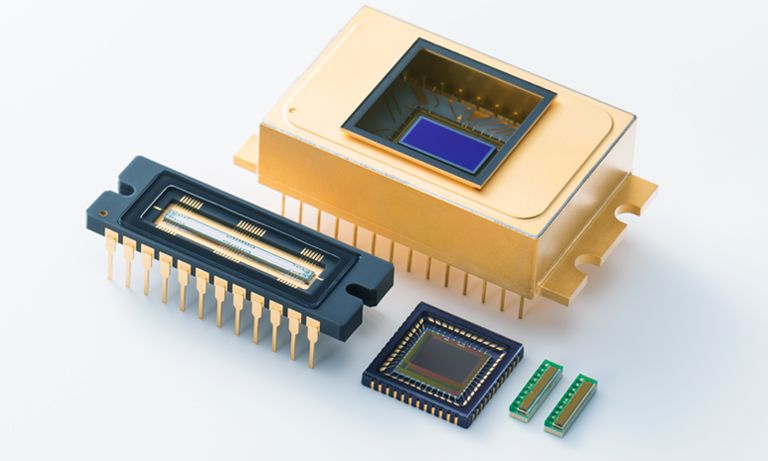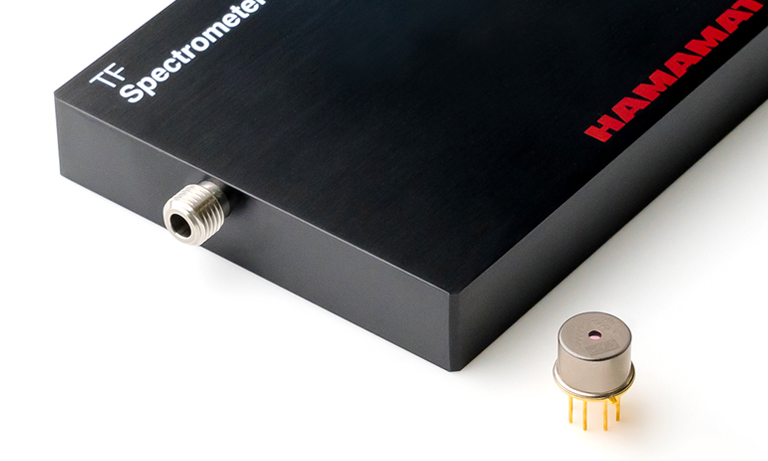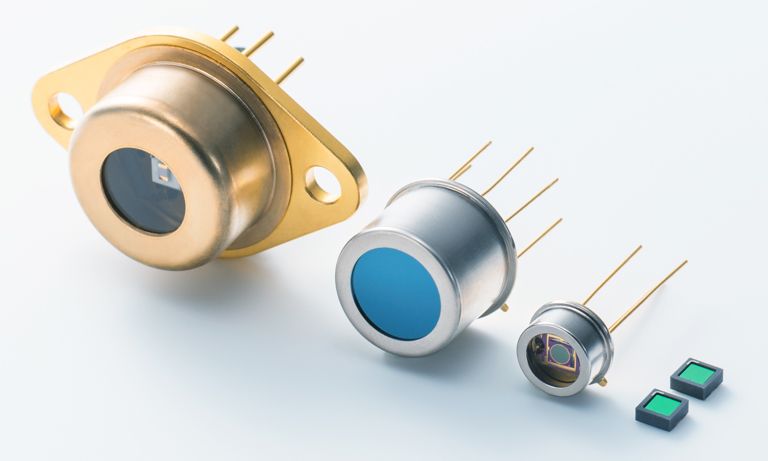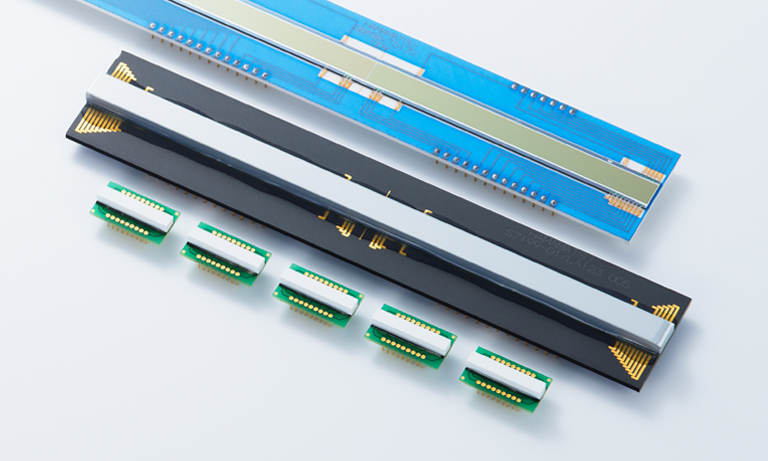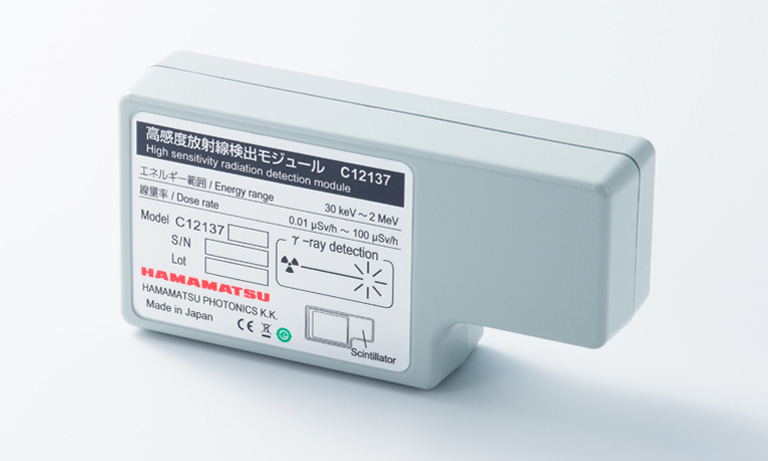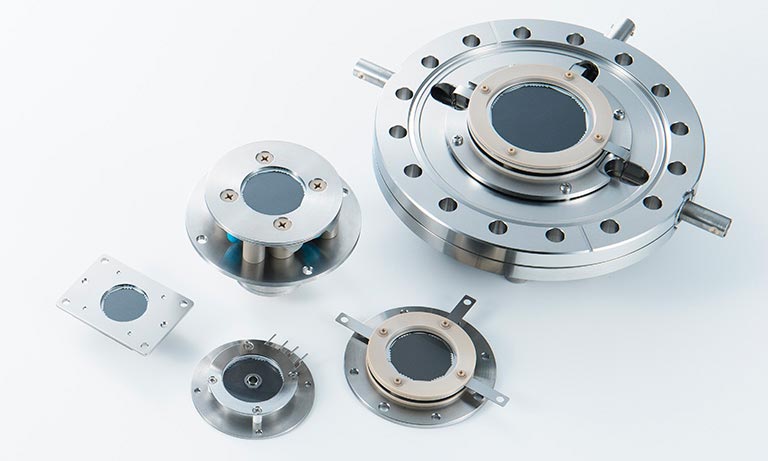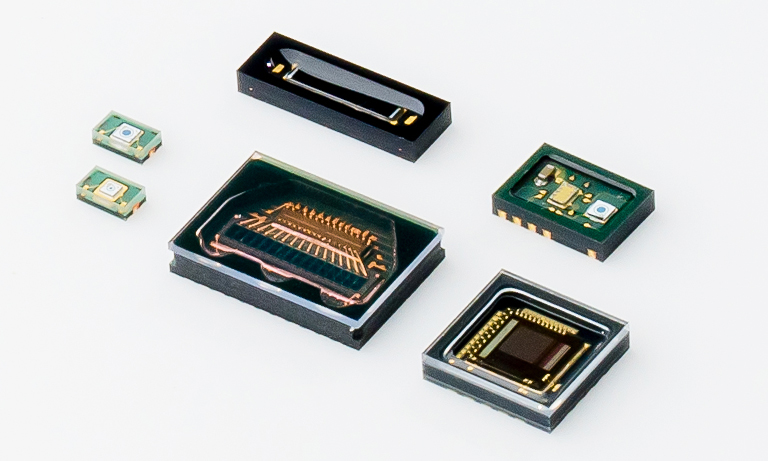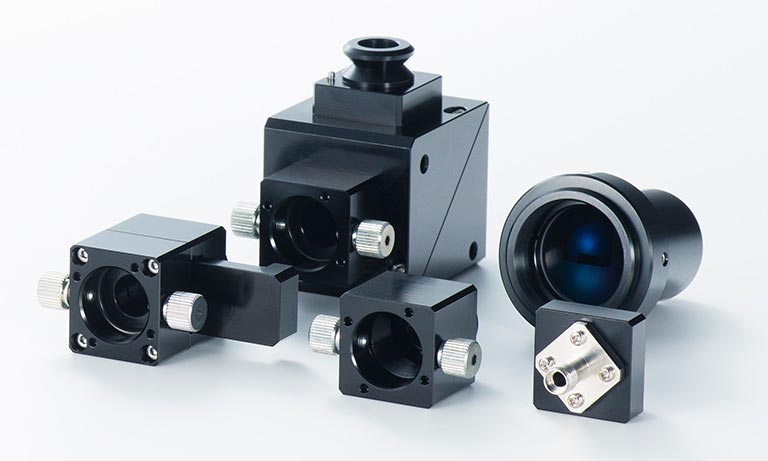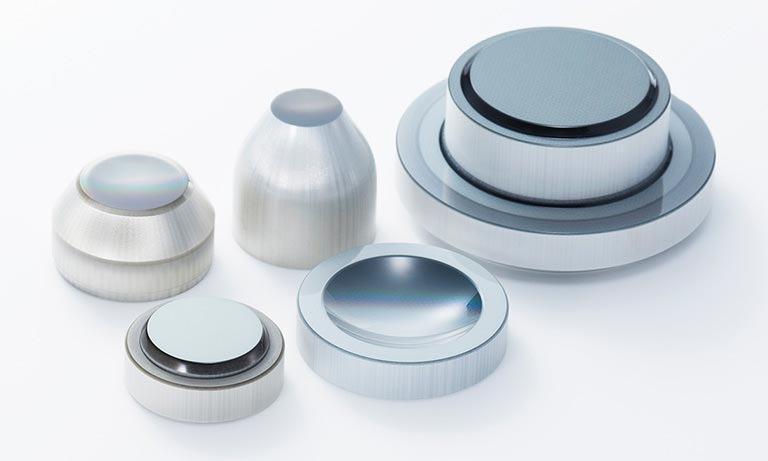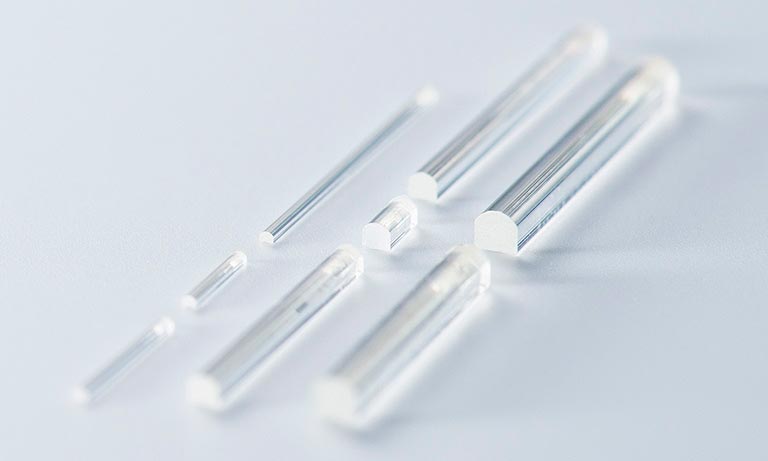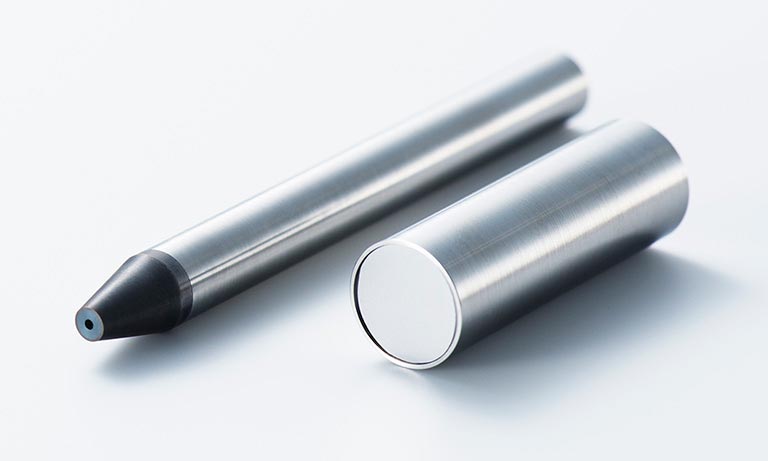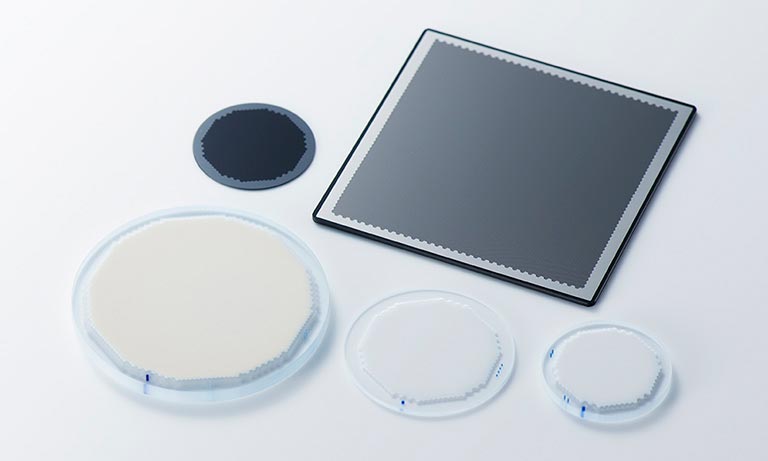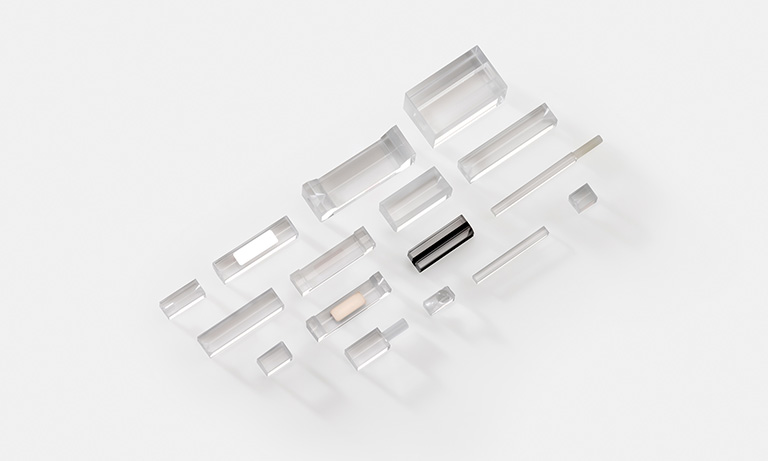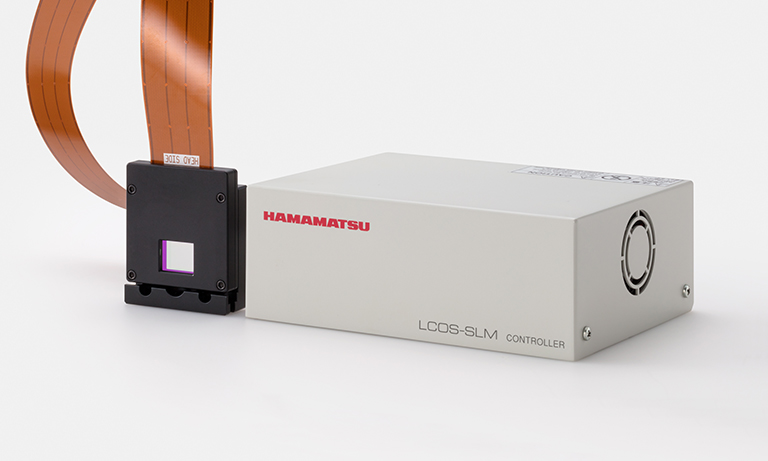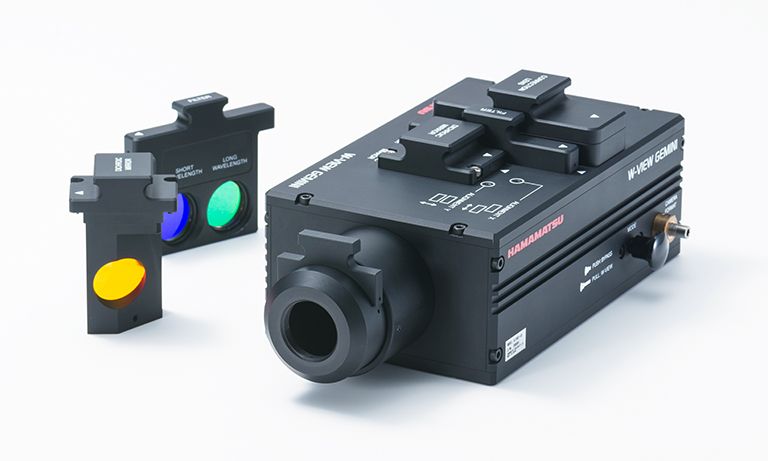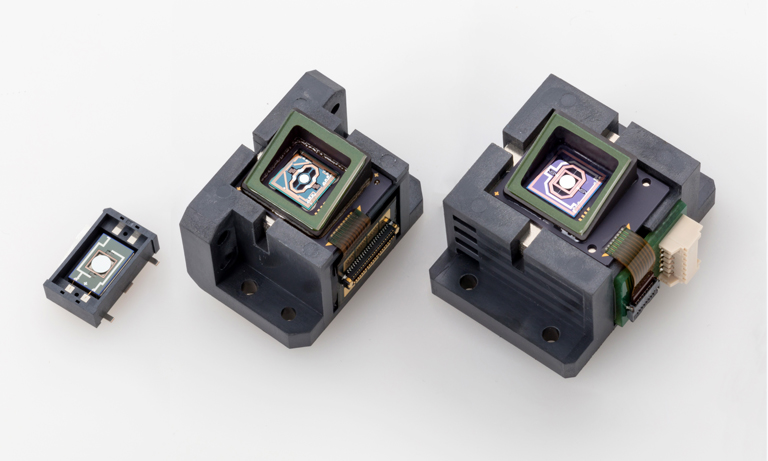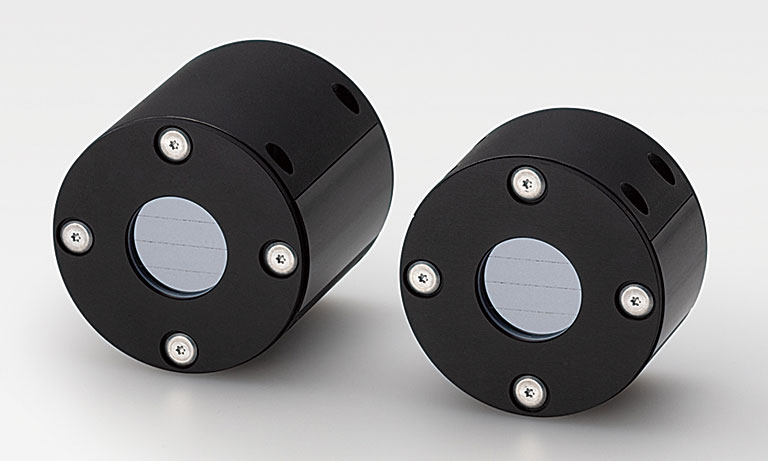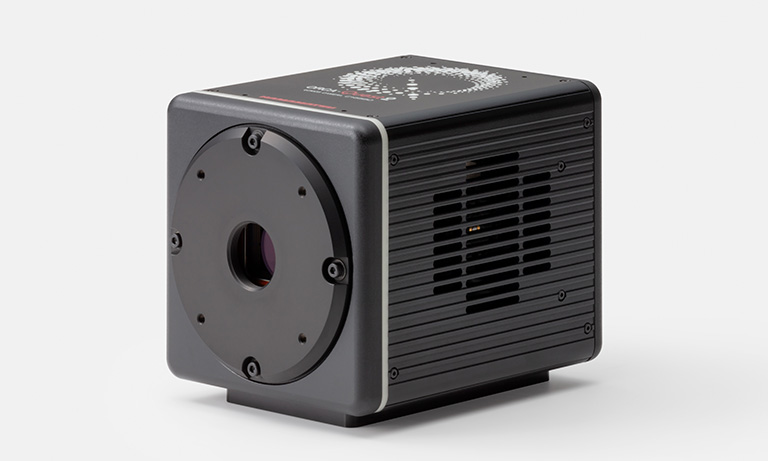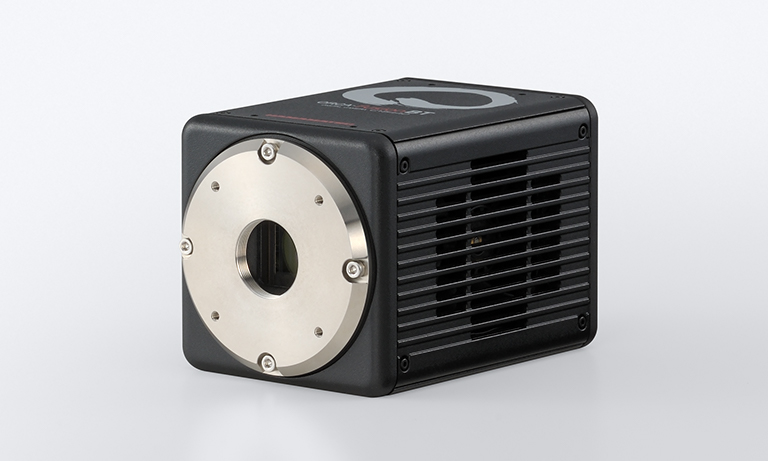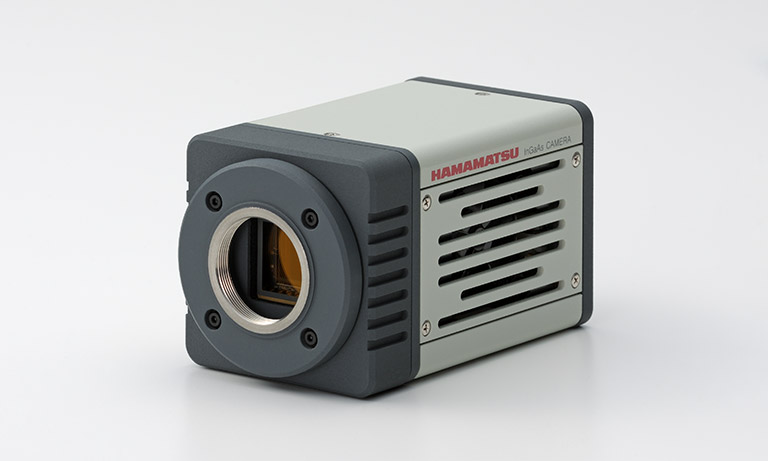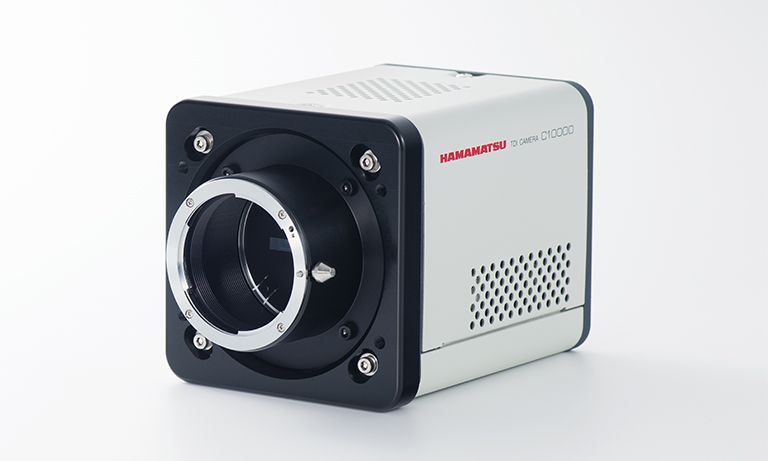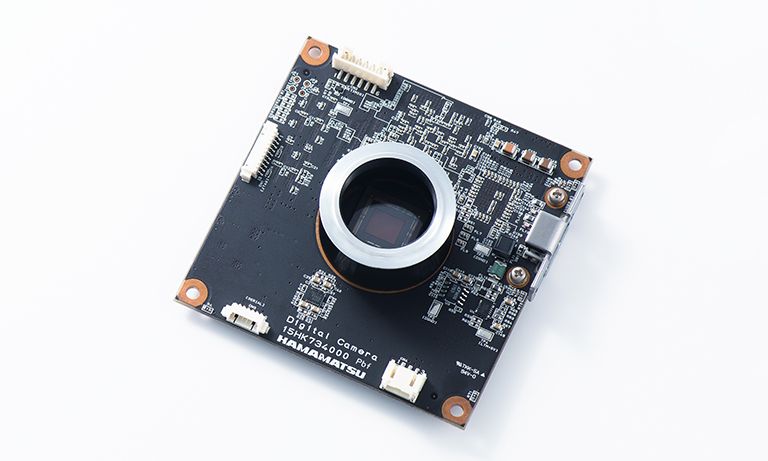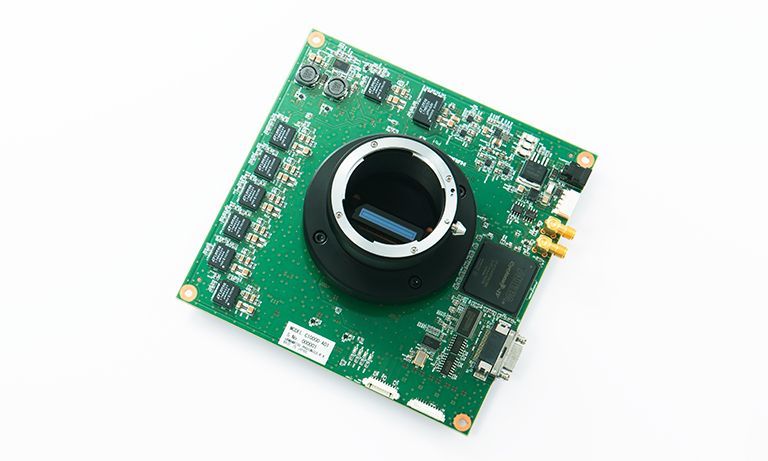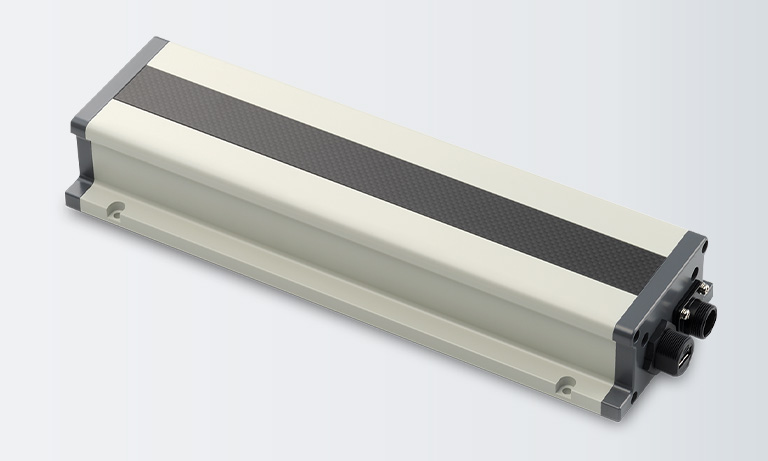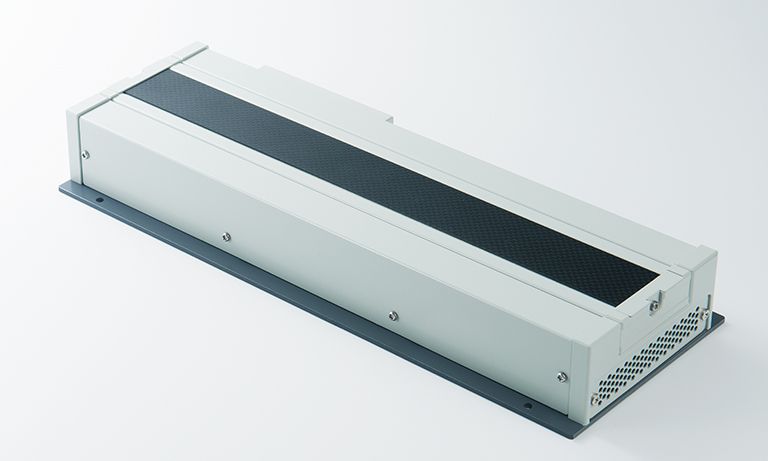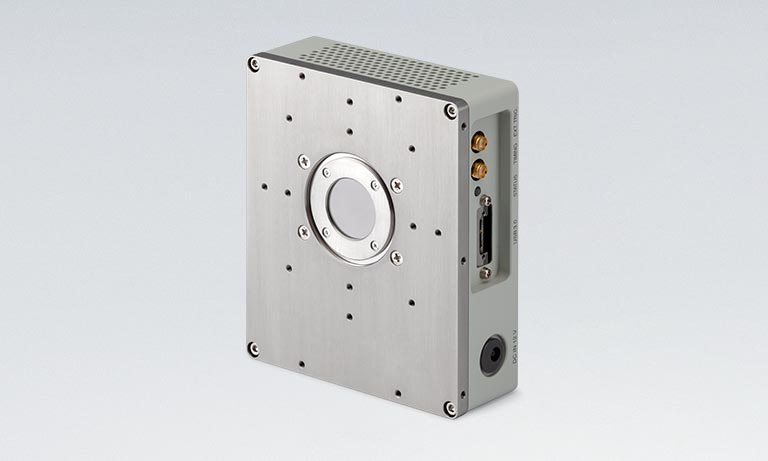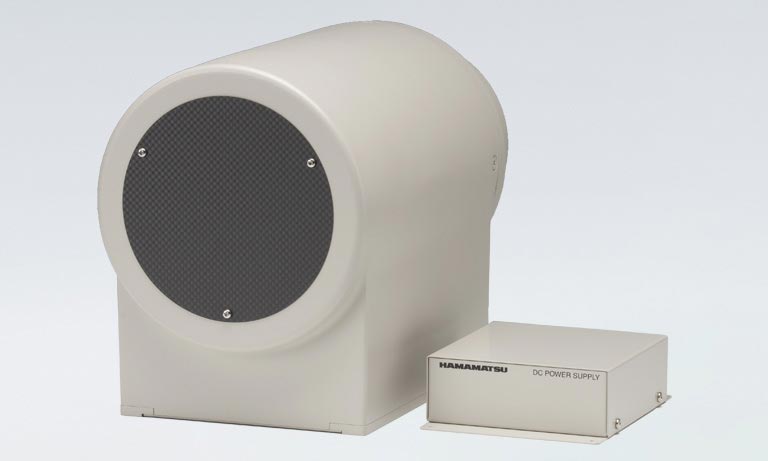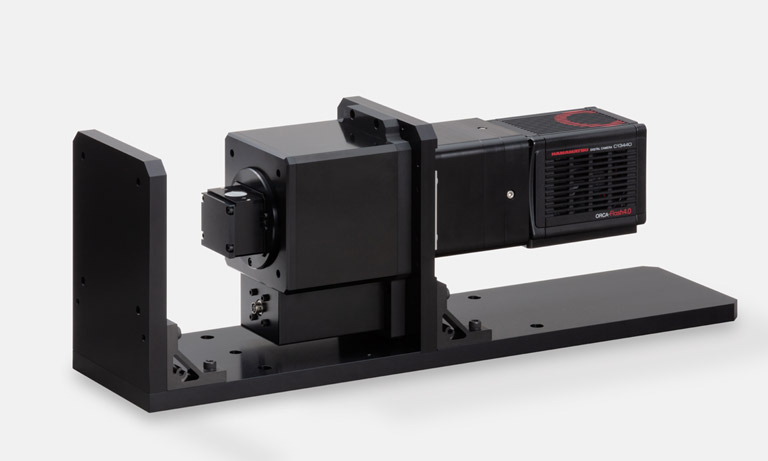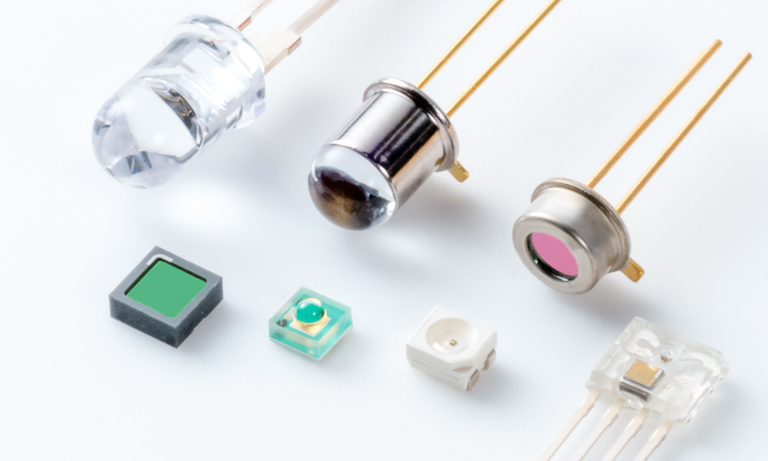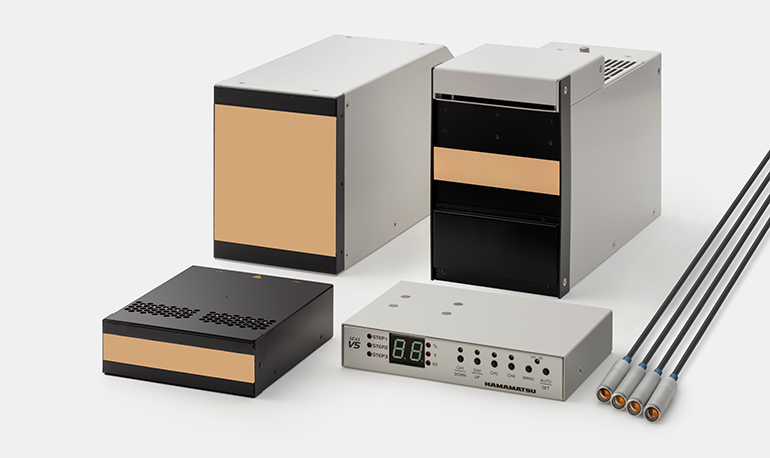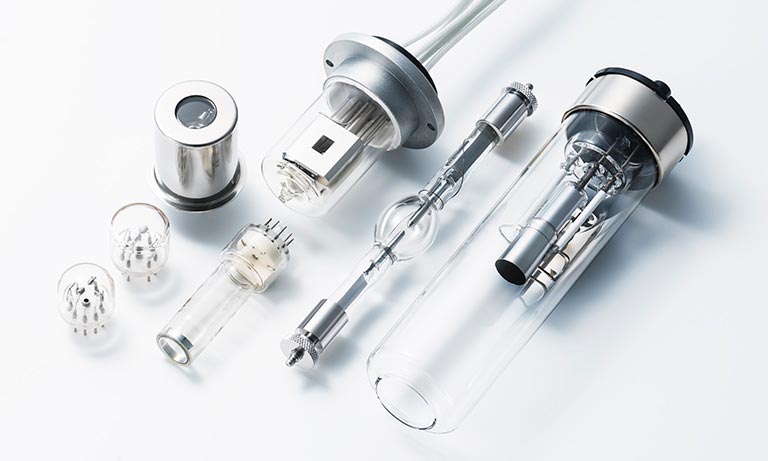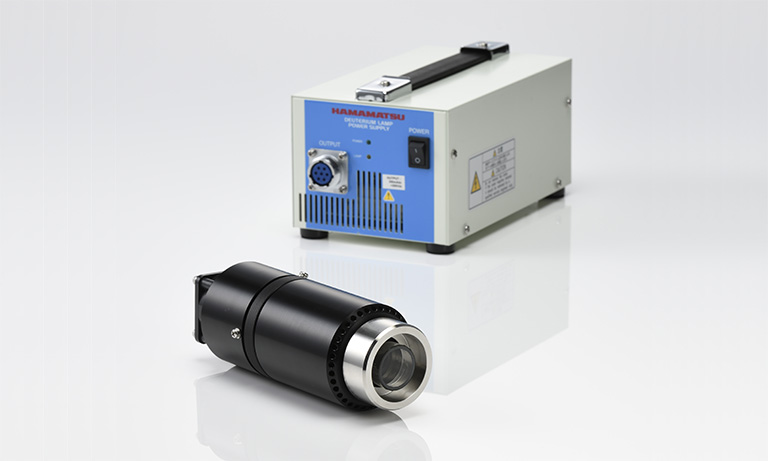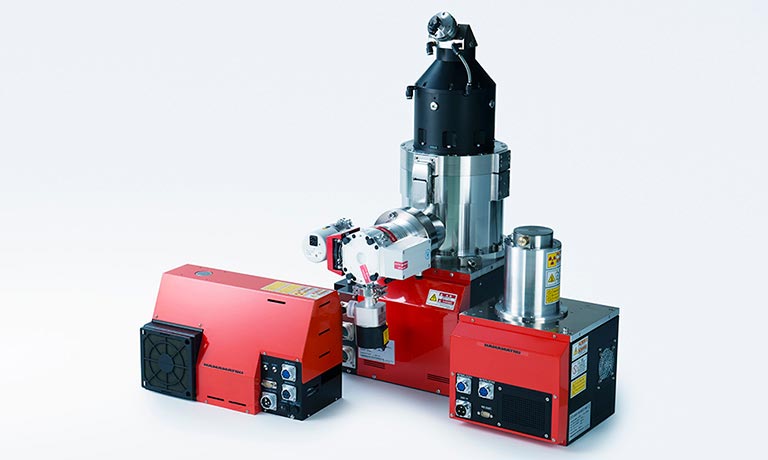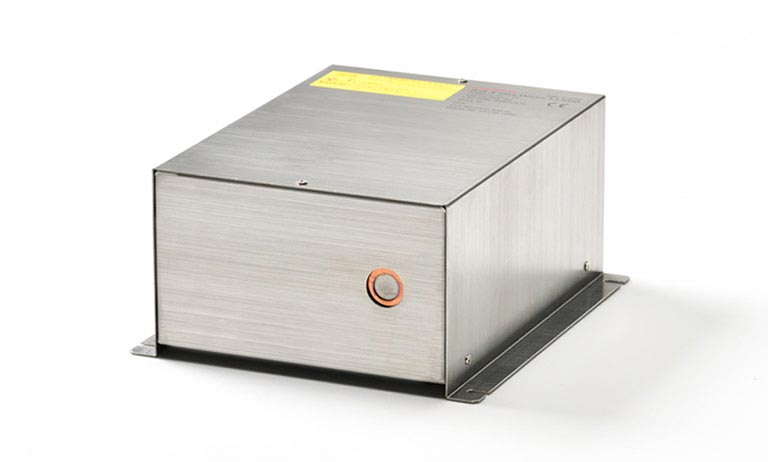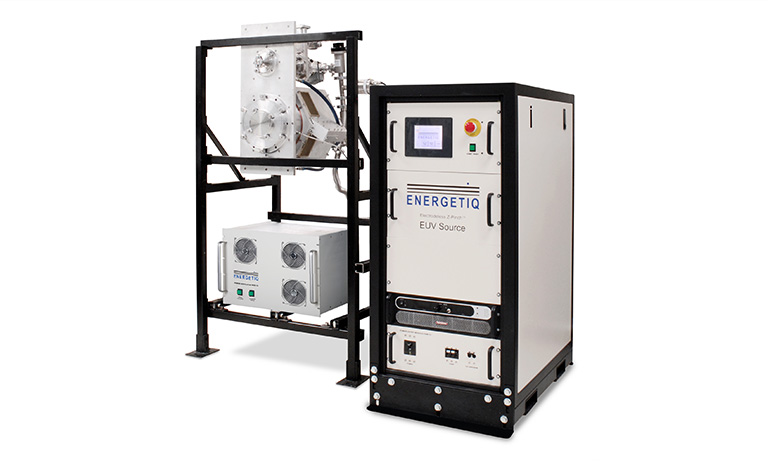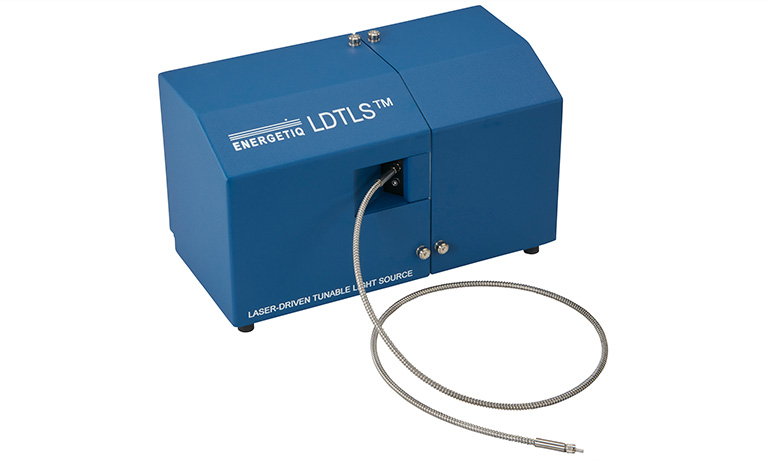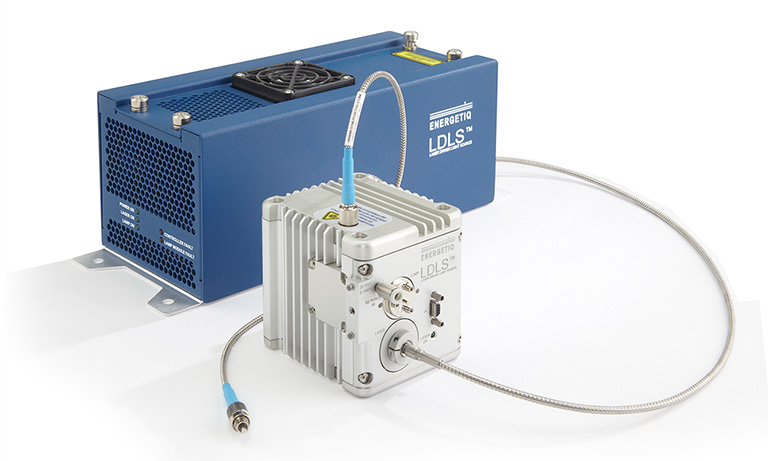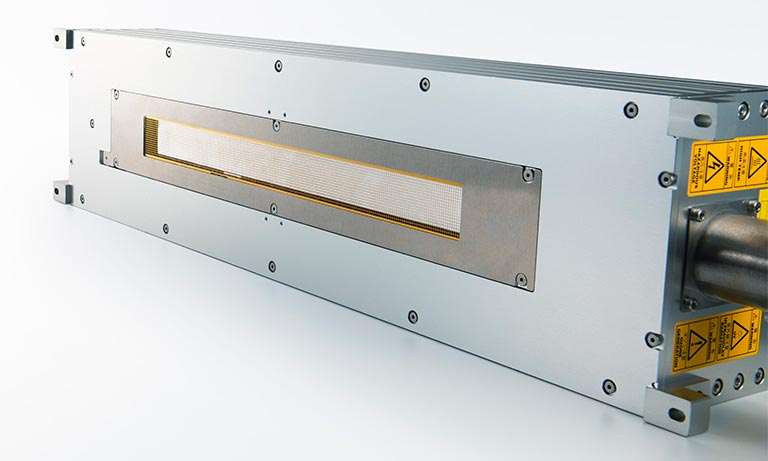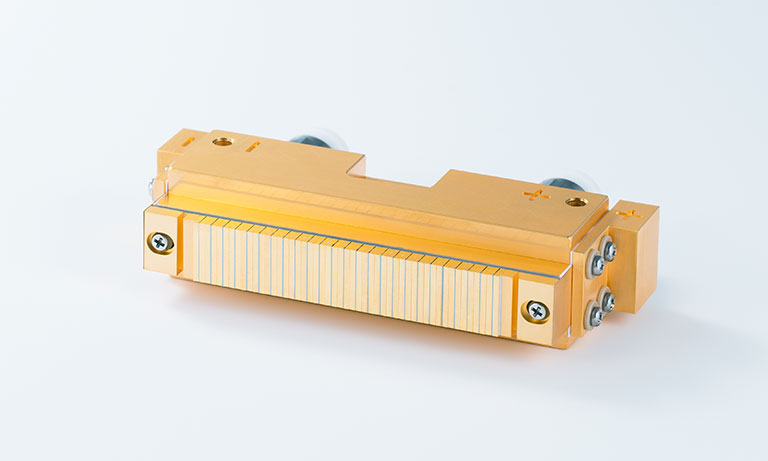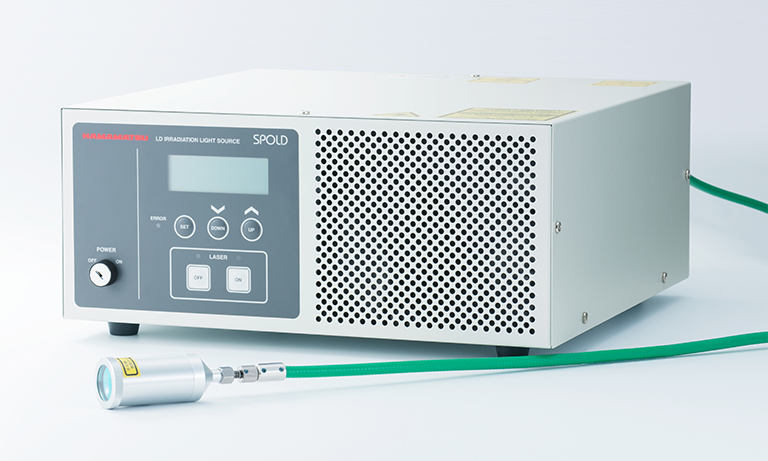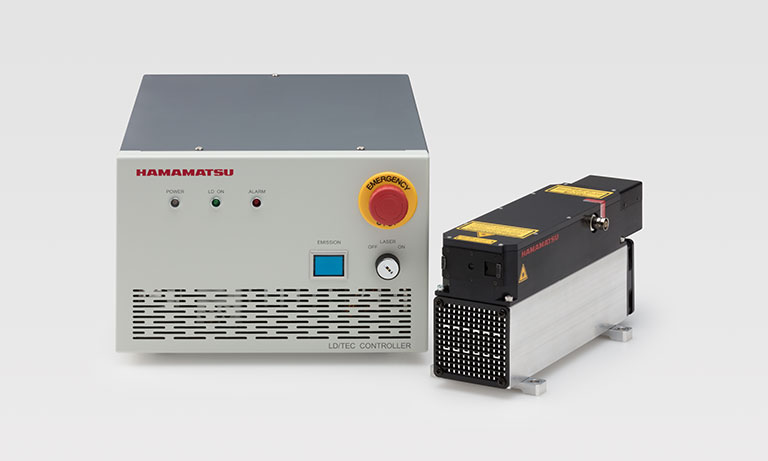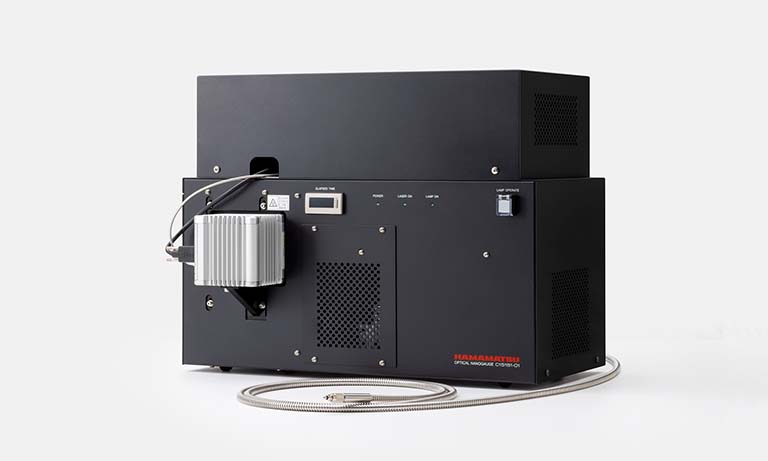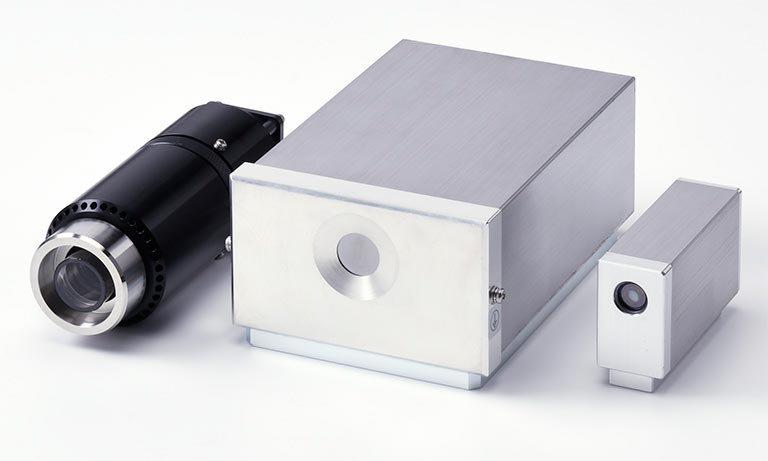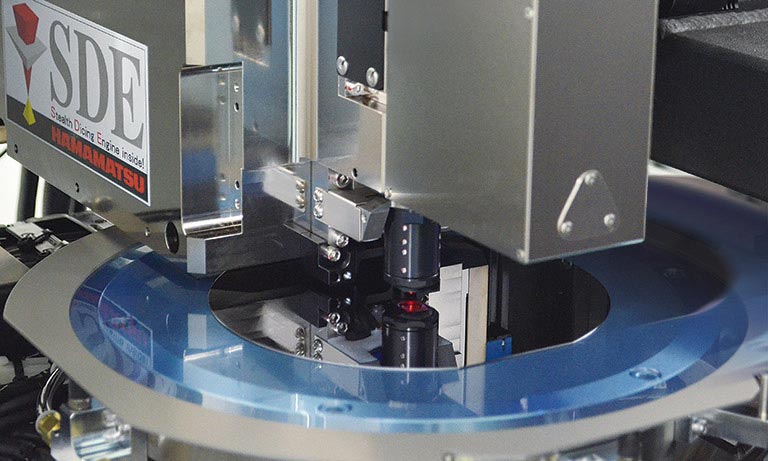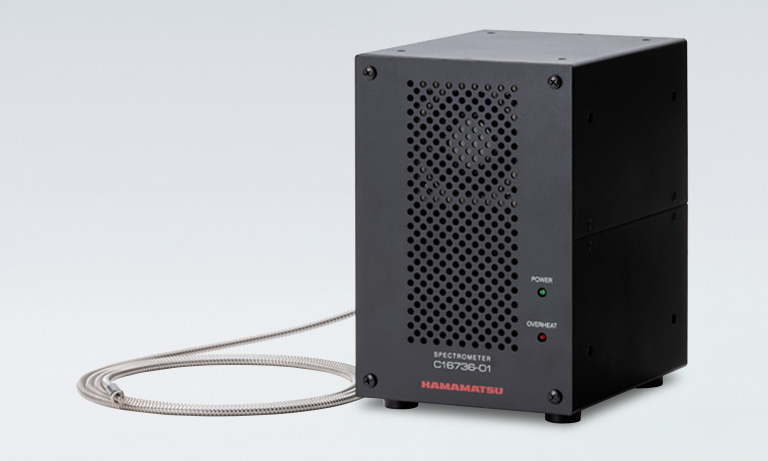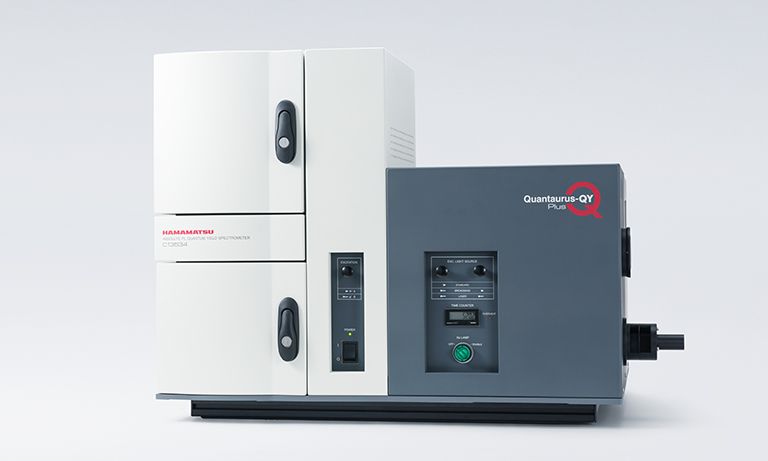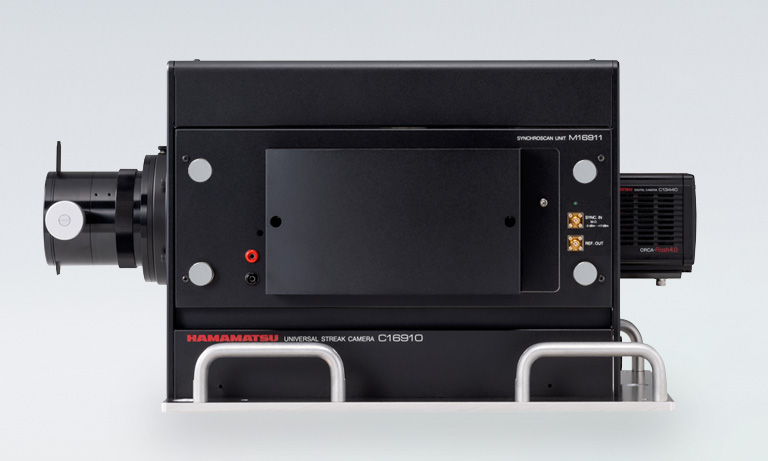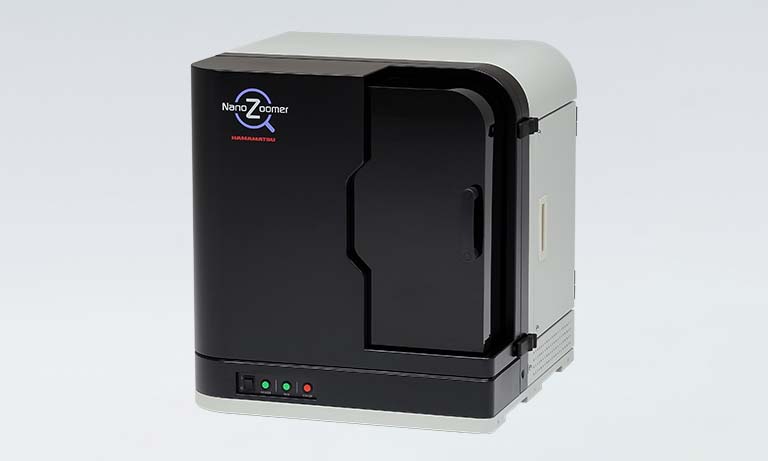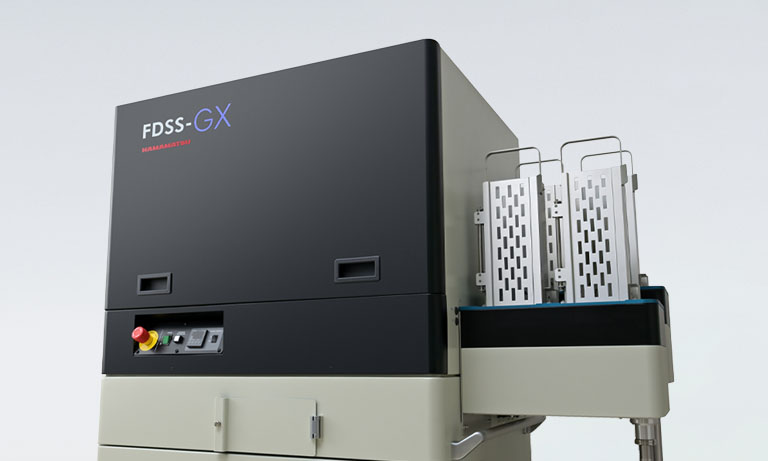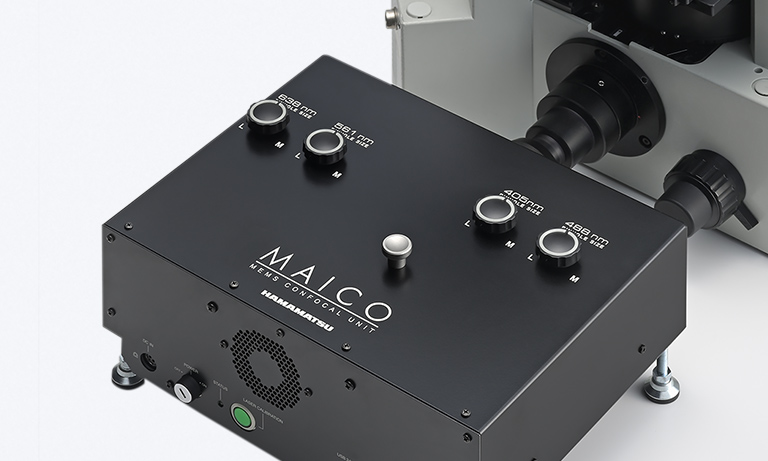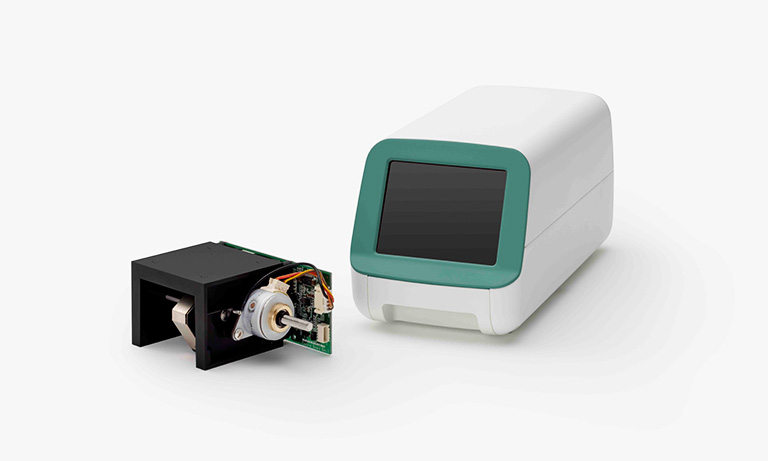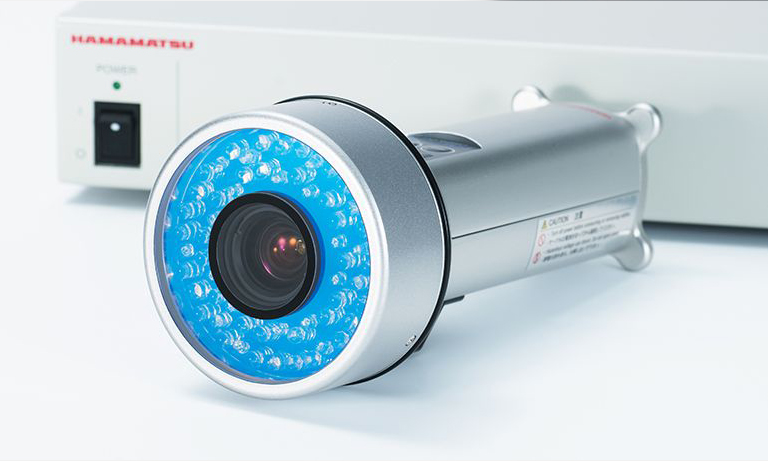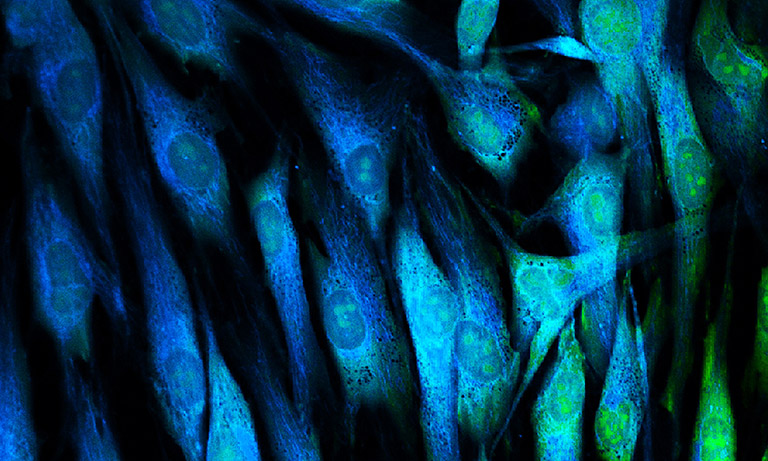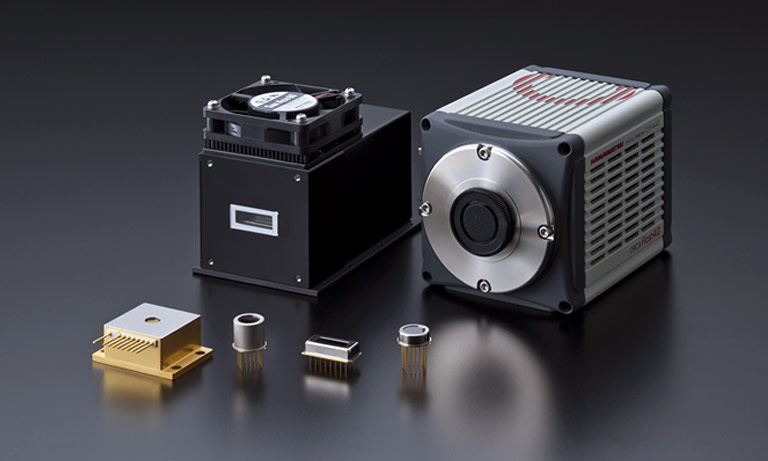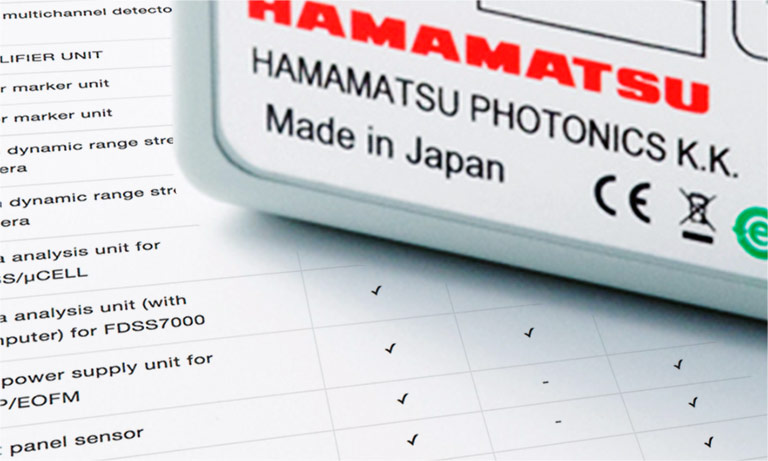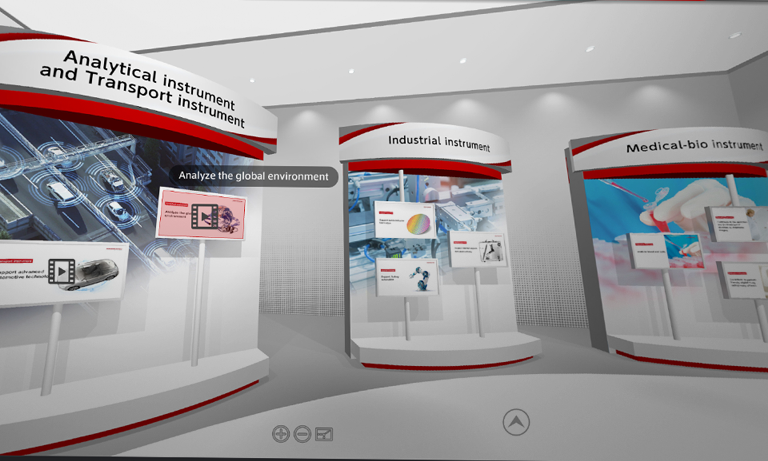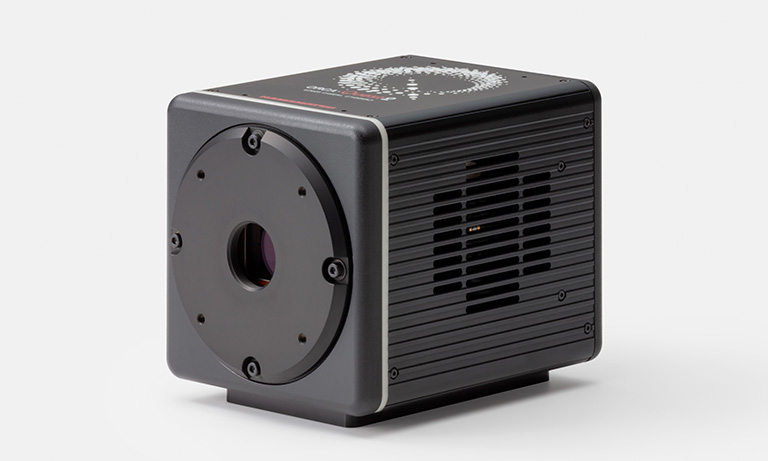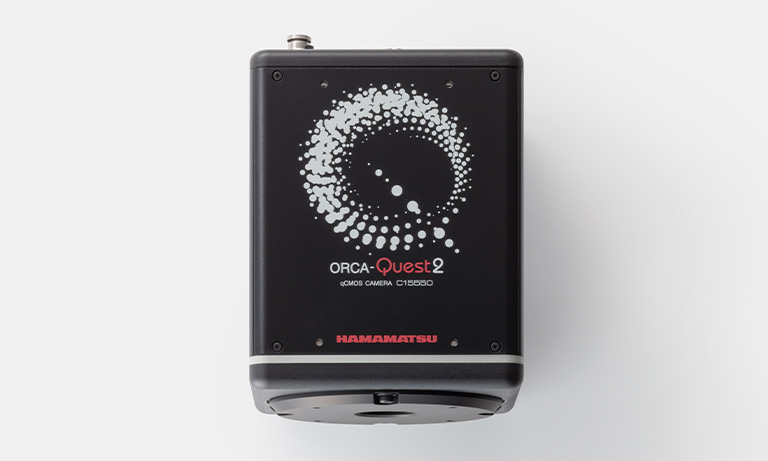Japan (EN)
Select your region or country.

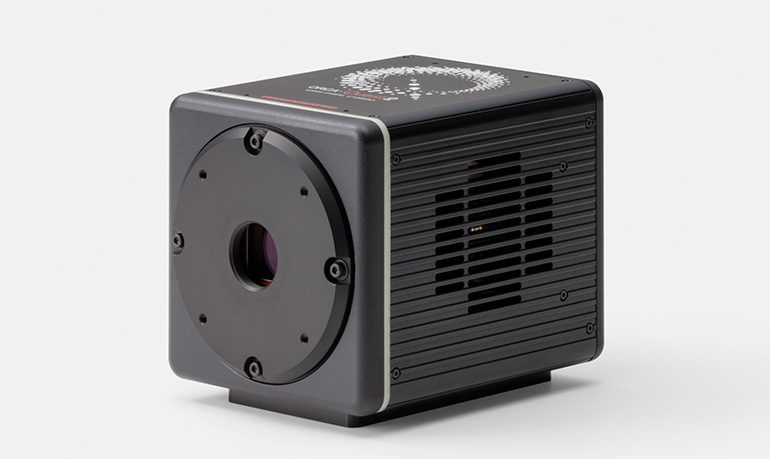
Applications | qCMOS cameras
Quantum technology
Neutral atom, Trapped ion
Neutral atoms and ions are aligned one by one in an array to be utilized as Qubits for Quantum computing. The qubit states can be determined by observing the fluorescence from each of them. The measurement of the fluorescence needs to be done in short time and then photodetectors with very low noise and high speed are needed. ORCA-Quest 2 can do both of diagnosis of the whole qubit array and state detection of each qubit with very low noise characteristics and high speed readout. Also, the QE covers wide range of wavelength for major ion and atom species.
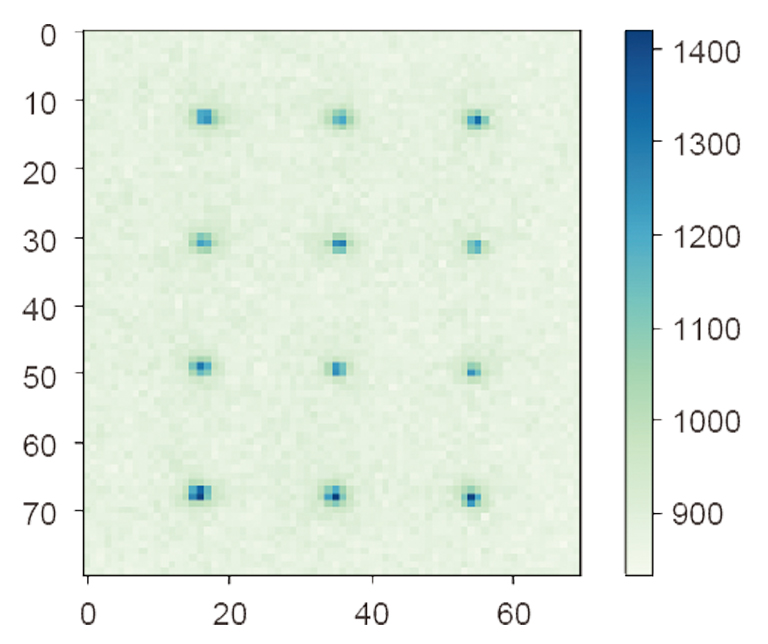
Fluorescence imaging of Rb atom array with ORCA-Quest
Data courtery of: Takashi Yamamoto and Asst. Prof. Toshiki Kobayashi, Osaka University
Quantum optics
Quantum optics uses single photon sources to make use of the Quantum nature of the single photon.The quantum optics research also uses single photon counting detectors, and now there are emerging needs of photon number resolving detectors to distinguish photon numbers coming into the detectors.A photon counting camera, a new concept in camera technologies, is expected to make a new discovery in this field.
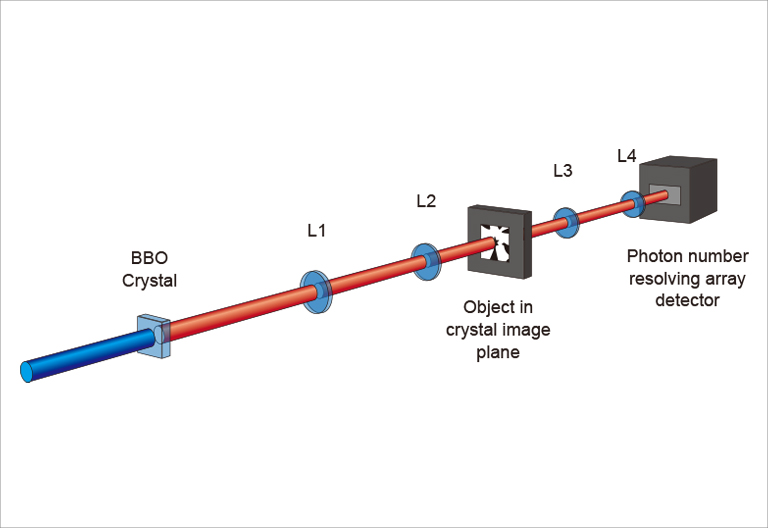
Experimental setup of Quantum imaging with ORCA-Quest
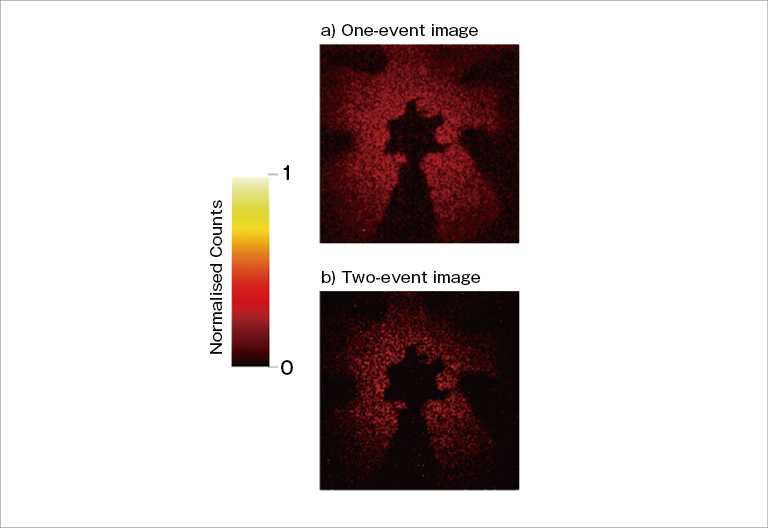
Images of Quantum imaging with ORCA-Quest
Data courtery of: Miles Padgett, University of Glasgow
Life science
Super resolution microscopy
Super resolution microscopy refers to a collection of methods to get a microscope image with higher spatial resolution than diffraction limit.The super resolution microscopy needs scientific cameras with combination of very low noise and small pixel size, resulting in a higher resolution.
Super resolution images from ORCA-Quest
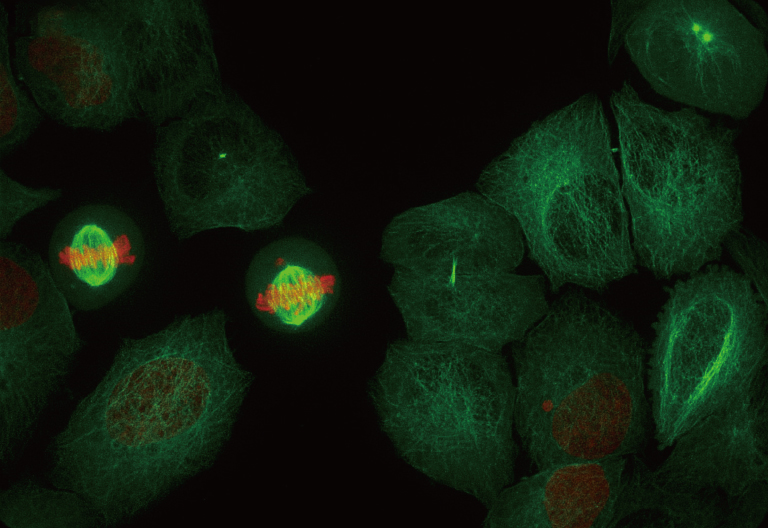
qCMOS camera / 4.6 μm pixel size
Super resolution images from ORCA-Fusion
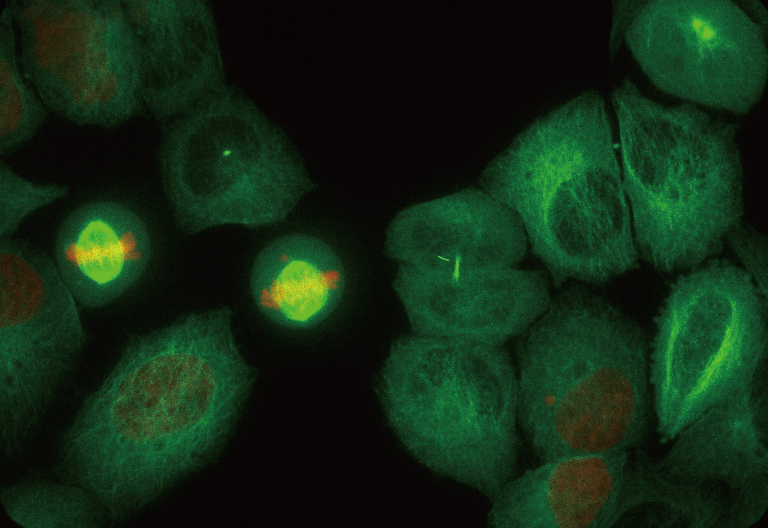
Gen III sCMOS camera / 6.5 μm pixel size
Experimental setup with ORCA-Quest
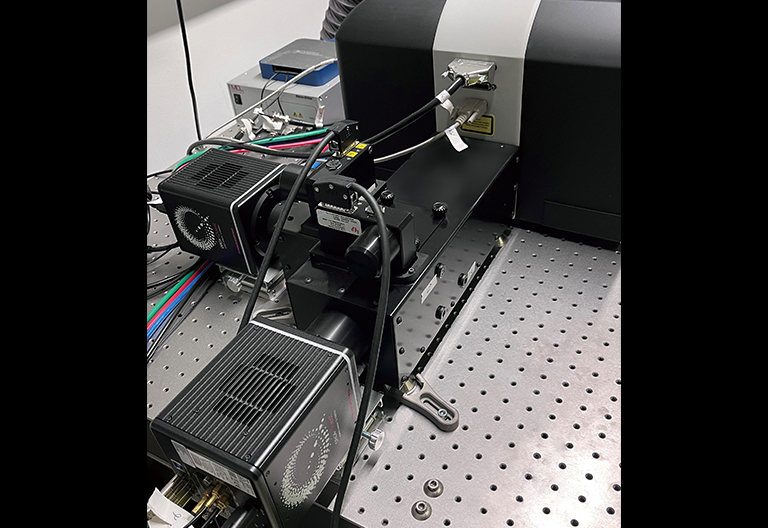
Provided by Steven Coleman at Visitech international with their VT-iSIM, high speed super resolution live cell imaging system.
Bioluminescence
Bioluminescence microscopy has been gaining attentions because of the unique advantages against the conventional fluorescence microscopy, such as no need of excitation light.The major drawback of the bioluminescence is its very low light intensity, resulting in long exposure time and low image quality.The bioluminescence research needs highly sensitive cameras even in long exposure.
NanoLuc fusion protein ARRB2 and Venus fusion protein V2R are nearby and BRET is occurring.
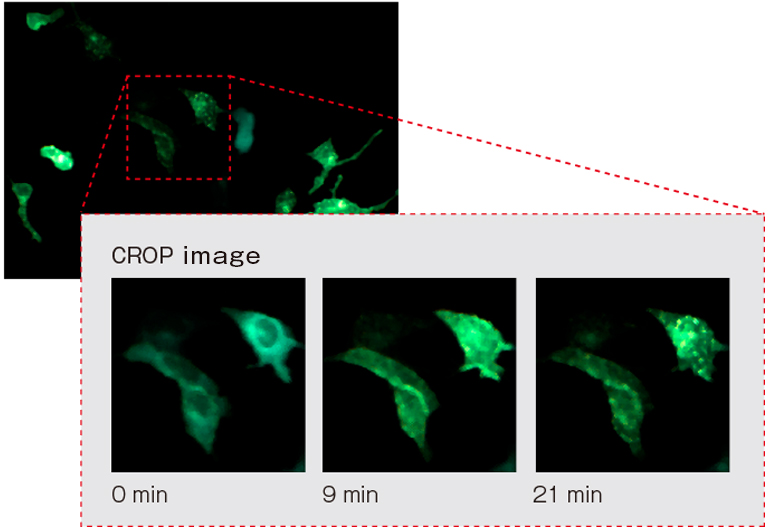
Overall image in the field of view(Objective: 20× / Exposure Time: 30sec / Binning: 4×4)
Appearance of the microscope system
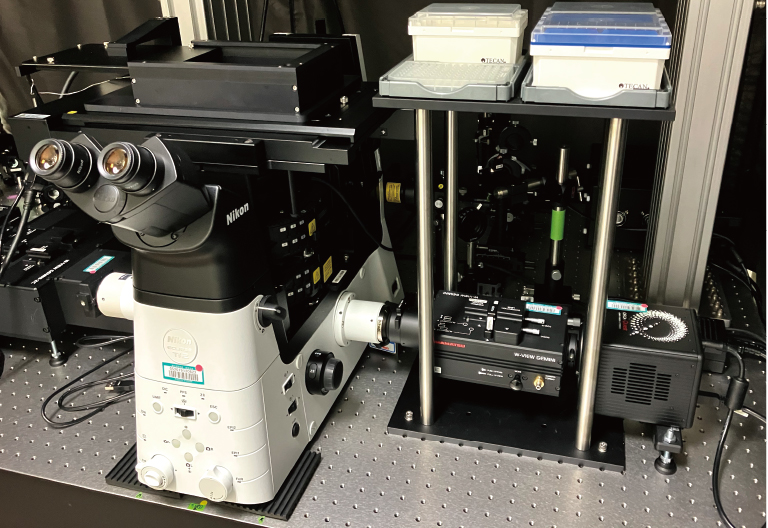
Data courtery of: Dr.Masataka Yanagawa, Department of Molecular & Cellular Biochemistry Graduate School of Pharmaceutical Science , Tohoku University
Delayed fluorescence in plants
Plants release a very small portion of the light energy they absorb for photosynthesis as light over a period of time. This phenomenon is known as delayed fluorescence. By detecting this faint light, it is possible to observe the effects of chemicals, pathogens, the environment, and other stressors on plants.
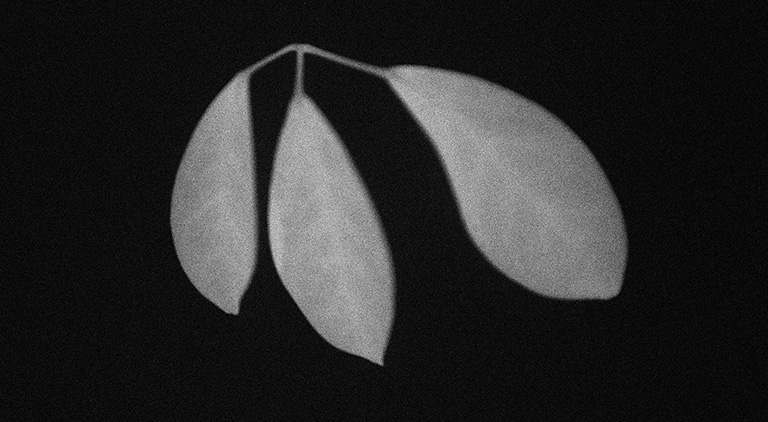
Delayed fluorescence of ornamental plants (exposure for 10 seconds after 10 seconds of excitation light quenching)
Astronomy
Lucky imaging
When observing stars from the ground, the image of the star can be blurred due to atmospheric turbulence therefore substantially reducing the ability to capture clear images. However, with short exposures and the right atmospheric conditions, you can sometimes capture clear images. For this reason, lucky imaging is a method of acquiring a large number of images and integrating only the clearest ones while aligning them.
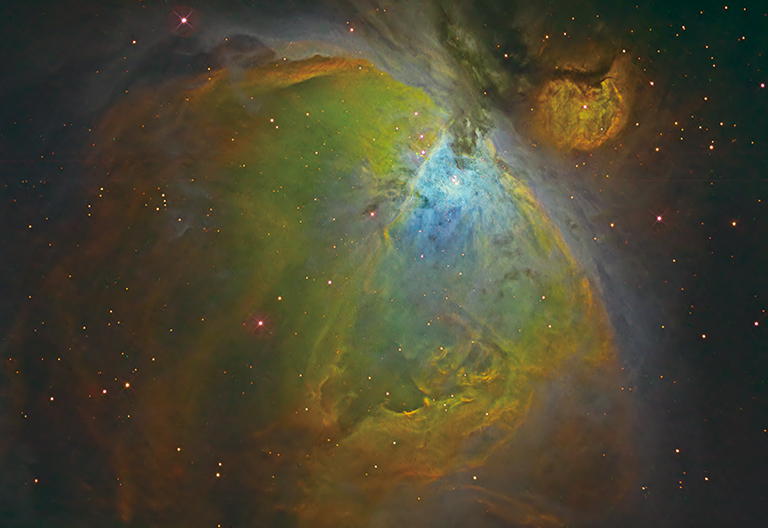
Orion Nebula (Color image with 3 wavelength filters)
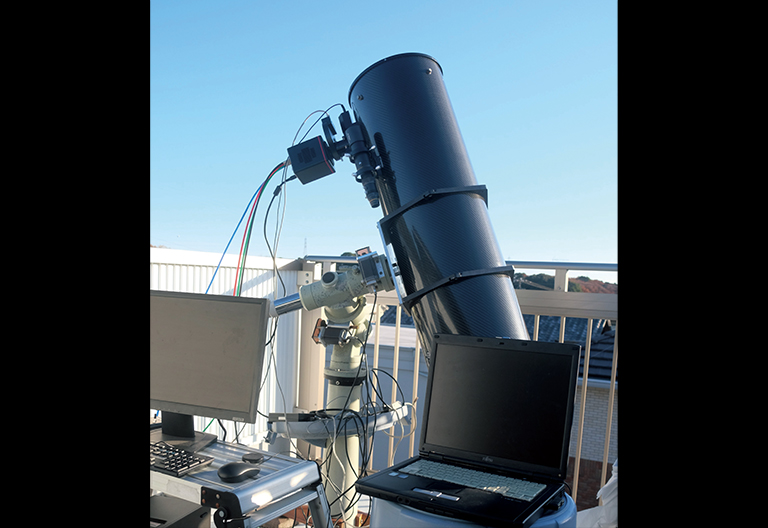
Imaging setup
Adaptive optics
Adaptive optics is a method where systems immediately correct the wavefront of incoming light which is disturbed by atmospheric fluctuations. In order to perform real-time and highly accurate wavefront correction, a camera needs to get images with high speed and high spatial resolution. In addition, the camera also needs high sensitivity because the wavefront correction is performed in a very dark condition where a laser guide star is measured.
Wavefront correction by adaptive optics
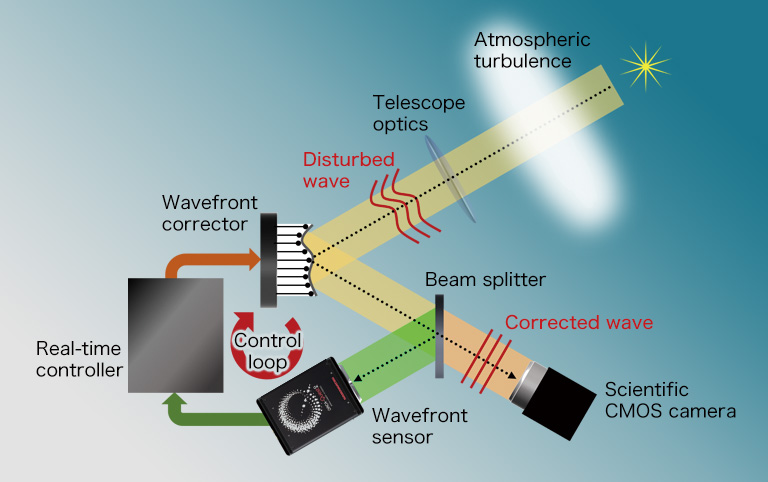
Comparison of adaptive optics*
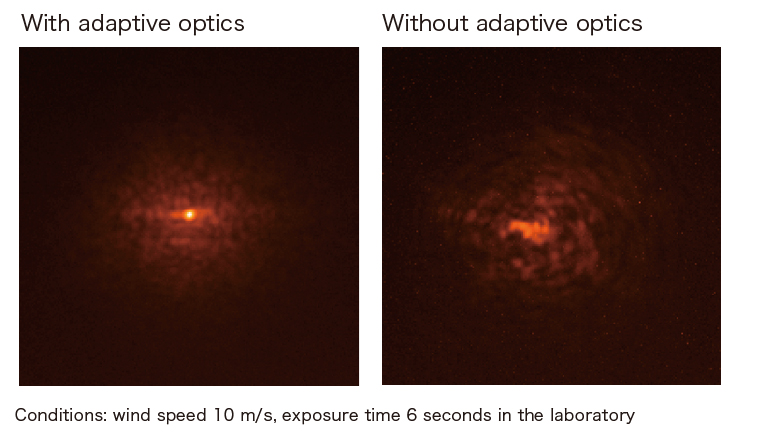
*Data courtery of: Kodai Yamamoto, Ph.D., Department of Astronomy, Kyoto University
HEP / Synchrotron
For imaging of X-ray or other kinds of high energy particles, a scientific camera coupled with a scintillator is often used. Low noise and high speed are required in the imaging system to detect momentary phenomena.
X-ray phase contrast CT image of mouse embryo
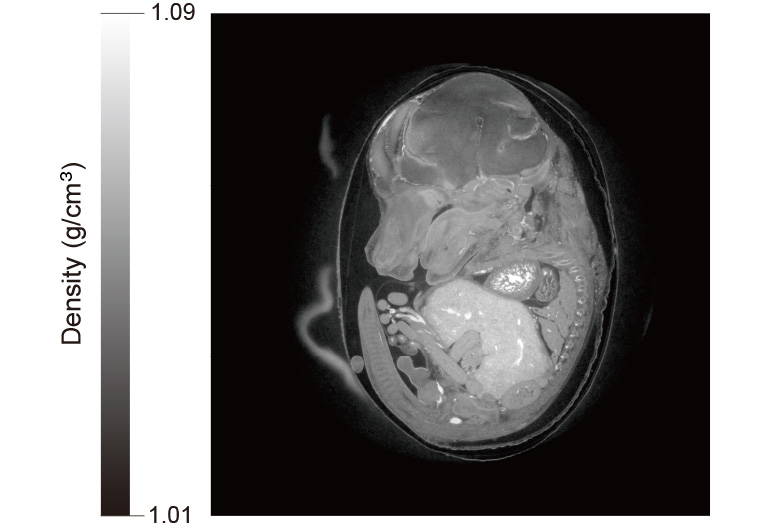
X-ray phase contrast CT image of mouse embryo from ORCA-Quest combined with High resolution X-ray imaging system (M11427)
Exposure time: 15 msec, Total measurement time: 6.5 min
Experimental setup
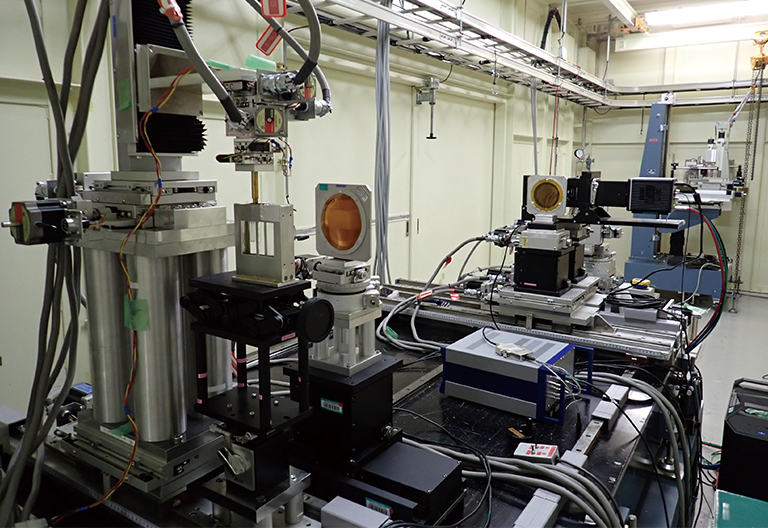
Camera setup
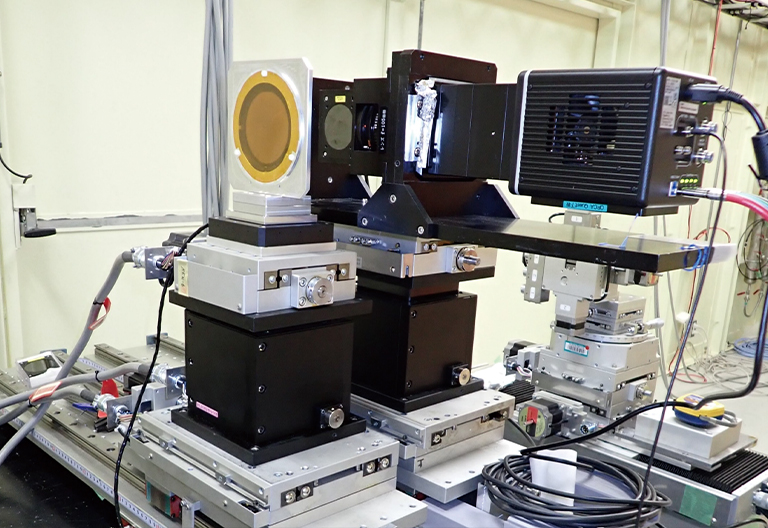
Data courtery of: SPring-8 BL20B2 beamline by Dr. Masato Hoshino, Senior researcher in Japan Synchrotron Radiation Research Institute (JASRI)
Raman spectroscopy
Raman effect is the scattering of light at a wavelength different from that of the incident light, and Raman spectroscopy is a technique for determining the material properties by measuring this wavelength. Raman spectroscopy enables structural analysis at the molecular level, which provides information on chemical bonding, crystallinity, etc.
Raman spectrum (single frame) comparison under condition of equal photon number per pixel in line scan type Raman imaging system
Raman Image
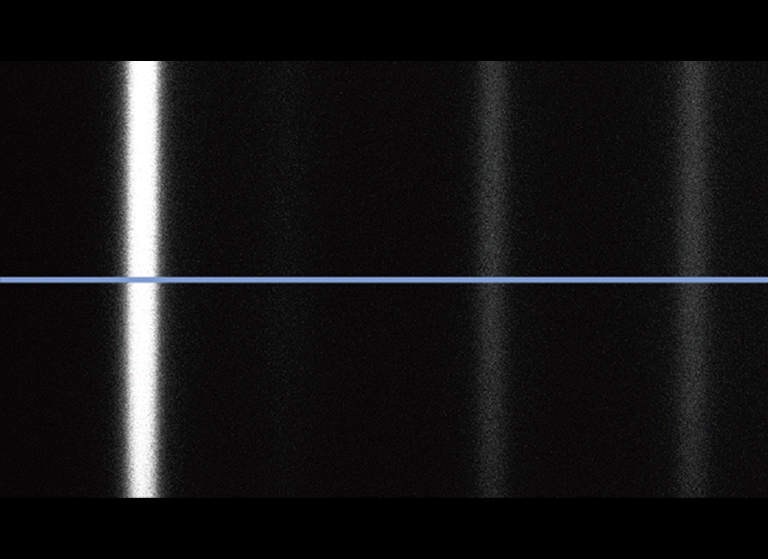
qCMOS
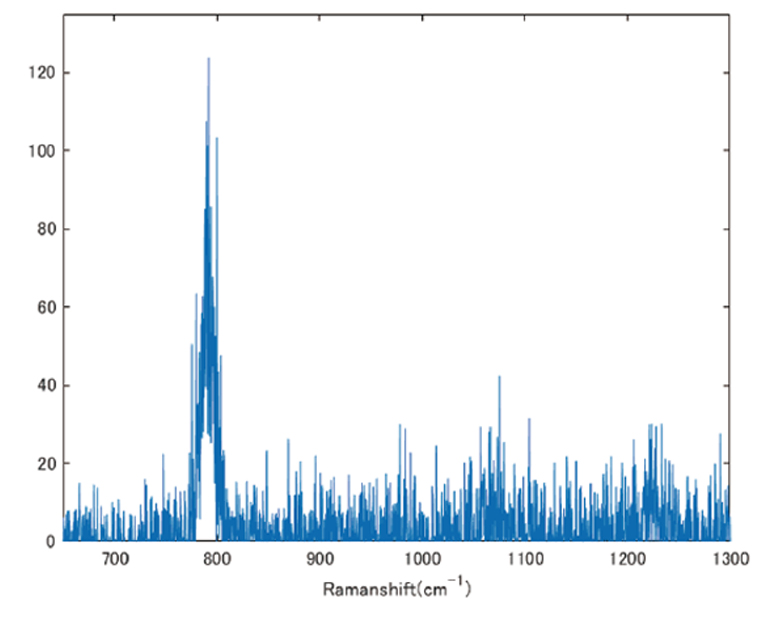
EM-CCD
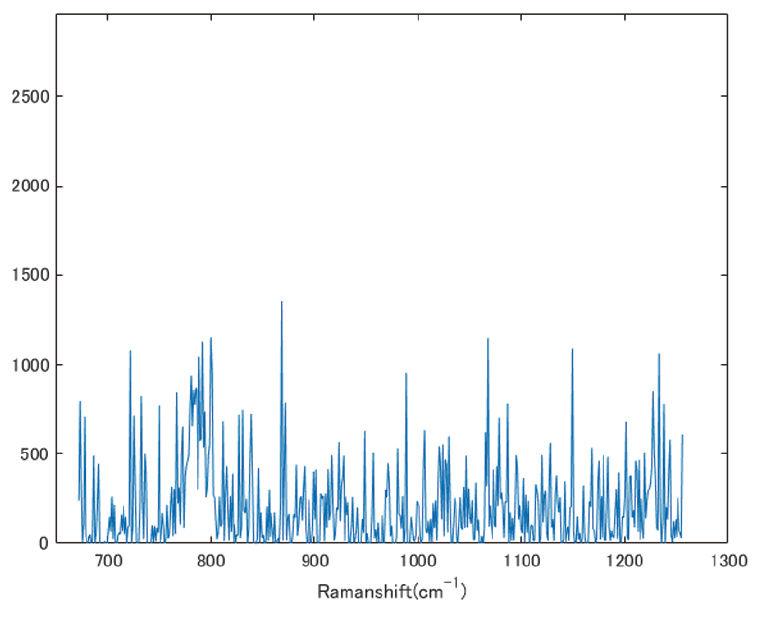
@10 photon/pixel/frame, 532 nm laser excitation
Reference: Photon number resolving capability of qCMOS camera for Raman spectroscopy and imaging
Special site
This site provides information on scientific cameras.
Since there is a wide range of camera types and performance, it is important to select the best camera for each application.
It introduces technical information, simulation tools, and examples of actual applications to help you fully understand the performance of the camera and select the best one for your application.
- Confirmation
-
It looks like you're in the . If this is not your location, please select the correct region or country below.
You're headed to Hamamatsu Photonics website for JP (English). If you want to view an other country's site, the optimized information will be provided by selecting options below.
In order to use this website comfortably, we use cookies. For cookie details please see our cookie policy.
- Cookie Policy
-
This website or its third-party tools use cookies, which are necessary to its functioning and required to achieve the purposes illustrated in this cookie policy. By closing the cookie warning banner, scrolling the page, clicking a link or continuing to browse otherwise, you agree to the use of cookies.
Hamamatsu uses cookies in order to enhance your experience on our website and ensure that our website functions.
You can visit this page at any time to learn more about cookies, get the most up to date information on how we use cookies and manage your cookie settings. We will not use cookies for any purpose other than the ones stated, but please note that we reserve the right to update our cookies.
1. What are cookies?
For modern websites to work according to visitor’s expectations, they need to collect certain basic information about visitors. To do this, a site will create small text files which are placed on visitor’s devices (computer or mobile) - these files are known as cookies when you access a website. Cookies are used in order to make websites function and work efficiently. Cookies are uniquely assigned to each visitor and can only be read by a web server in the domain that issued the cookie to the visitor. Cookies cannot be used to run programs or deliver viruses to a visitor’s device.
Cookies do various jobs which make the visitor’s experience of the internet much smoother and more interactive. For instance, cookies are used to remember the visitor’s preferences on sites they visit often, to remember language preference and to help navigate between pages more efficiently. Much, though not all, of the data collected is anonymous, though some of it is designed to detect browsing patterns and approximate geographical location to improve the visitor experience.
Certain type of cookies may require the data subject’s consent before storing them on the computer.
2. What are the different types of cookies?
This website uses two types of cookies:
- First party cookies. For our website, the first party cookies are controlled and maintained by Hamamatsu. No other parties have access to these cookies.
- Third party cookies. These cookies are implemented by organizations outside Hamamatsu. We do not have access to the data in these cookies, but we use these cookies to improve the overall website experience.
3. How do we use cookies?
This website uses cookies for following purposes:
- Certain cookies are necessary for our website to function. These are strictly necessary cookies and are required to enable website access, support navigation or provide relevant content. These cookies direct you to the correct region or country, and support security and ecommerce. Strictly necessary cookies also enforce your privacy preferences. Without these strictly necessary cookies, much of our website will not function.
- Analytics cookies are used to track website usage. This data enables us to improve our website usability, performance and website administration. In our analytics cookies, we do not store any personal identifying information.
- Functionality cookies. These are used to recognize you when you return to our website. This enables us to personalize our content for you, greet you by name and remember your preferences (for example, your choice of language or region).
- These cookies record your visit to our website, the pages you have visited and the links you have followed. We will use this information to make our website and the advertising displayed on it more relevant to your interests. We may also share this information with third parties for this purpose.
Cookies help us help you. Through the use of cookies, we learn what is important to our visitors and we develop and enhance website content and functionality to support your experience. Much of our website can be accessed if cookies are disabled, however certain website functions may not work. And, we believe your current and future visits will be enhanced if cookies are enabled.
4. Which cookies do we use?
There are two ways to manage cookie preferences.
- You can set your cookie preferences on your device or in your browser.
- You can set your cookie preferences at the website level.
If you don’t want to receive cookies, you can modify your browser so that it notifies you when cookies are sent to it or you can refuse cookies altogether. You can also delete cookies that have already been set.
If you wish to restrict or block web browser cookies which are set on your device then you can do this through your browser settings; the Help function within your browser should tell you how. Alternatively, you may wish to visit www.aboutcookies.org, which contains comprehensive information on how to do this on a wide variety of desktop browsers.
5. What are Internet tags and how do we use them with cookies?
Occasionally, we may use internet tags (also known as action tags, single-pixel GIFs, clear GIFs, invisible GIFs and 1-by-1 GIFs) at this site and may deploy these tags/cookies through a third-party advertising partner or a web analytical service partner which may be located and store the respective information (including your IP-address) in a foreign country. These tags/cookies are placed on both online advertisements that bring users to this site and on different pages of this site. We use this technology to measure the visitors' responses to our sites and the effectiveness of our advertising campaigns (including how many times a page is opened and which information is consulted) as well as to evaluate your use of this website. The third-party partner or the web analytical service partner may be able to collect data about visitors to our and other sites because of these internet tags/cookies, may compose reports regarding the website’s activity for us and may provide further services which are related to the use of the website and the internet. They may provide such information to other parties if there is a legal requirement that they do so, or if they hire the other parties to process information on their behalf.
If you would like more information about web tags and cookies associated with on-line advertising or to opt-out of third-party collection of this information, please visit the Network Advertising Initiative website http://www.networkadvertising.org.
6. Analytics and Advertisement Cookies
We use third-party cookies (such as Google Analytics) to track visitors on our website, to get reports about how visitors use the website and to inform, optimize and serve ads based on someone's past visits to our website.
You may opt-out of Google Analytics cookies by the websites provided by Google:
https://tools.google.com/dlpage/gaoptout?hl=en
As provided in this Privacy Policy (Article 5), you can learn more about opt-out cookies by the website provided by Network Advertising Initiative:
http://www.networkadvertising.org
We inform you that in such case you will not be able to wholly use all functions of our website.
Close
